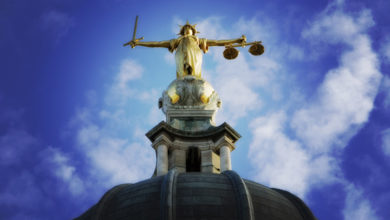Technology
Confirmed: The New York Times is Using Blockchain to Combat Fake News

The New York Times Company has released details of its blockchain-based experiments. They plan to use blockchain technology to fight the use and spread of misinformation in the media. First revealed in March, the latest news can be found on the new website for News Provenance Project.
According to the website, the News Provenance Project is being spearheaded by the NYT’s R&D team. They’re exploring “ways to make the origins of journalistic content clearer to news audience”. In collaboration with IBM Garage, they’re using the Hyperledger Fabric’s permissioned blockchain to guarantee the authenticity of digital files, such as news photographs.
Storage and sharing of metadata on the blockchain – more on the project
The News Provenance Project is currently on the first phase and is expected to run through late 2019. They aim to turn “technical and user research into a proof of concept, focused on photojournalism, to demonstrate how this system could work at scale.”
As part of the PoC, they’re “creating a system for storage and sharing of contextual metadata” about media, such as images and videos, published by news organizations.
The objective behind the storage and sharing of metadata is simple.
It’s tailored to close the gap between the information about the media published, possessed by the news organizations, and the information the users have ready access to. Since the published content, which can come in video image or text forms, spreads across the world, its original context is usually lost somewhere.
In the gap, “trolls and bad actors” use a variety of tools and techniques to mislead people. The outcome is the same: consumers are confused, deceived and even “apathetic to news”. Exposure to misinformation is creating fatigued users.
Therefore, by keeping and sharing the media’s metadata on the blockchain, such as a record of the time, location and of the videos and photos, misinformation can be fought.
How can you distribute this information though?
The News Provenance Project wants to create a reliable mechanism of distribution that can “serve as the last line of defense in protecting users”, by establishing a set of signals. These can travel with the published media and displayed across all platforms, from social media to group chats, to emails.
By leveraging the immutability and decentralization of the blockchain, they want to fight off manipulation and enhance users’ trust in the media.

Recognizing authentic material
It doesn’t stop there. They’re also “conducting user experience research to identify the types of signals that can aid users in recognizing authentic media.” This can be a game-changer in the way we consume our daily dose of news online.
Reportedly, the project aims to make the platform available to variously-sized publications. The NYT will keep us posted on all updates on the project, which will culminate in a report at the end of the pilot.
You can read more on the New York Times’ post on Medium by Sasha Koren, the program’s project lead.
Related article:




Major thanks for the blog.Really looking forward to read more. Fantastic.
Heya i am for the first time here. I found this board and I find It truly helpful & it helped me out much. I’m hoping to give something again and aid others such as you aided me.
Hi there, I enjoy reading all of your article post. I like to write alittle comment to support you.
magnificent post, very informative. I wonder why the other experts of this sector don’t notice this. You should continue your writing. I am confident, you have a huge readers’ base already!
Howdy just wanted to give you a brief heads up and let you know a few of the images aren’t loading correctly. I’m not sure why but I think its a linking issue. I’ve tried it in two different internet browsers and both show the same outcome.
Wow! This could be one particular of the most beneficial blogs We have ever arrive across on this subject. Actually Fantastic. I’m also an expert in this topic therefore I can understand your effort.
Absolutely composed subject matter, thankyou for selective information .
Pretty! This has been an incredibly wonderful post.Many thanks for providing this information.
I cannot thank you enough for the article.Really thank you! Cool.